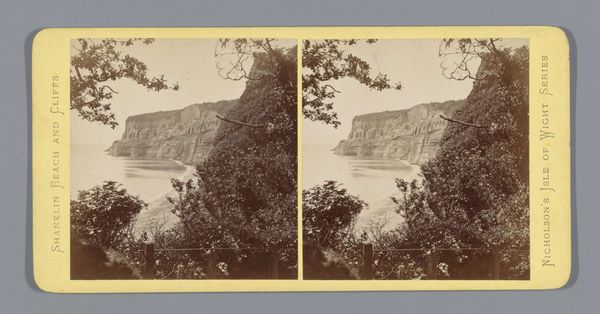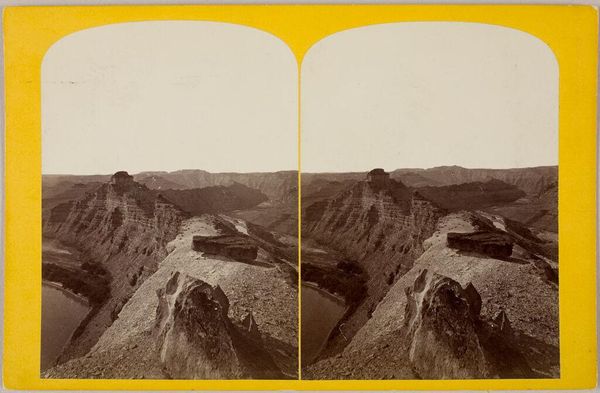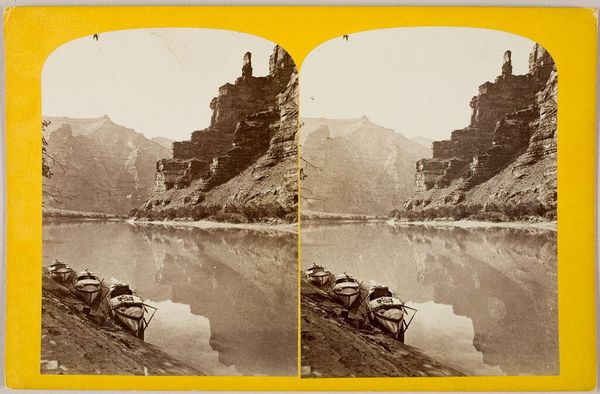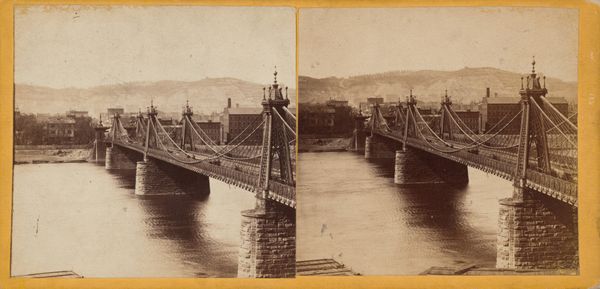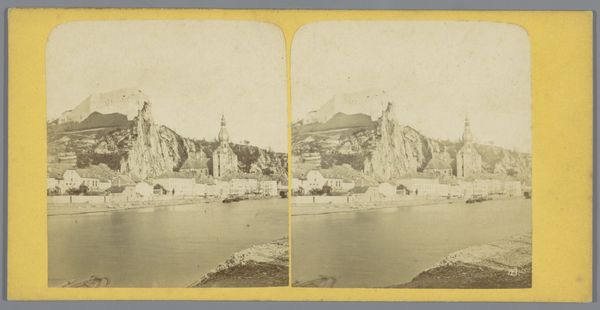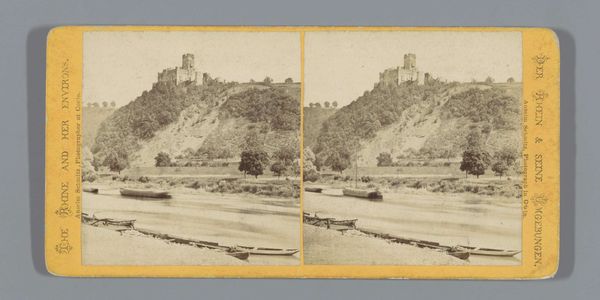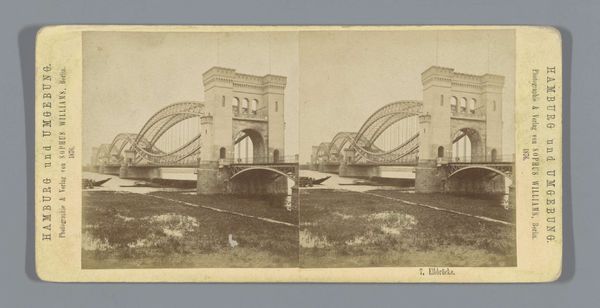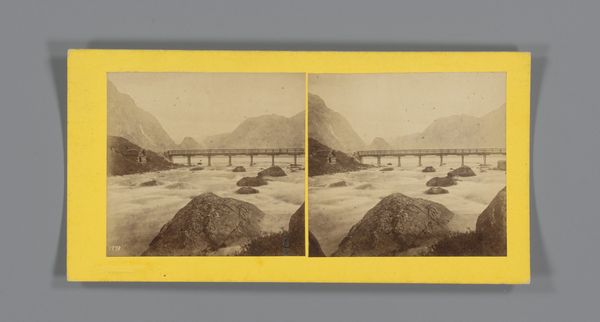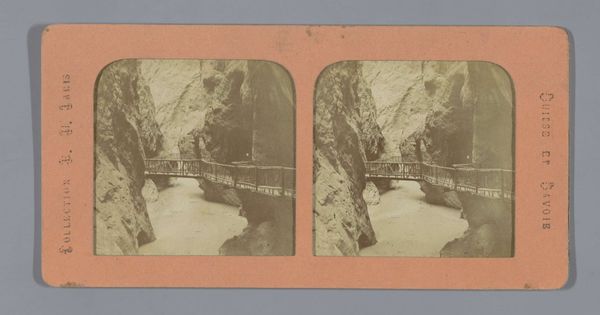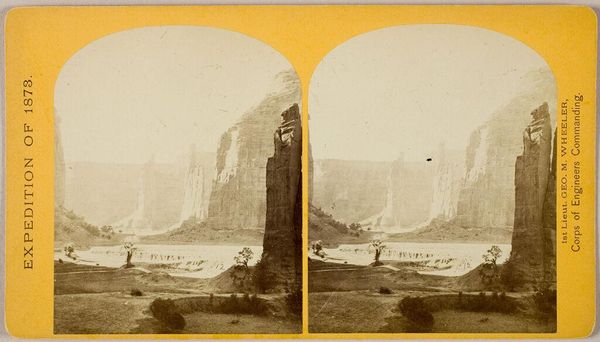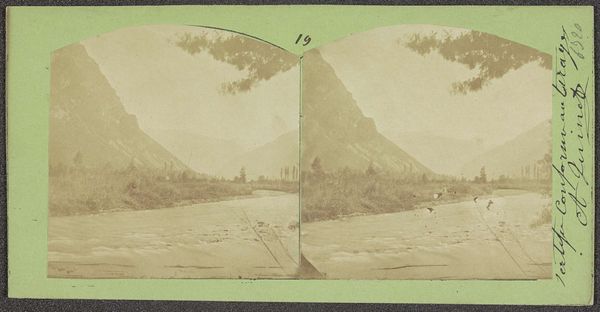
print, photography, albumen-print
# print
#
landscape
#
river
#
photography
#
printed format
#
albumen-print
Dimensions: height 85 mm, width 170 mm
Copyright: Rijks Museum: Open Domain
Curator: Francis Bedford’s albumen print, titled “View of the Clifton Suspension Bridge,” likely captured sometime between 1850 and 1880, is a marvel of early photography. Editor: The crisp detail is remarkable. And there's a sense of tranquility to the scene, the horizontal bridge contrasting so beautifully with the rocky, textured landscape, almost like a minimalist symphony of lines and forms. Curator: Indeed. The Clifton Suspension Bridge, even then, represented Victorian engineering prowess, linking disparate communities. Photography at this time served as a potent tool for documenting such achievements, and for solidifying a sense of national identity through images circulated widely. Editor: And notice how Bedford framed the bridge? He used the winding river and imposing cliffs to draw the viewer's eye right to that central structure, creating a focal point that feels incredibly balanced. It's like he's not just showing us the bridge, but also guiding our perception. Curator: Precisely! Bedford's choice to photograph the bridge from this vantage point in the Avon Gorge speaks to a romantic vision of progress, a testament to humanity's ability to shape the landscape while existing harmoniously with nature. This was widely popularized in travel narratives and influenced public perception of modernity. Editor: Though, the monochromatic tones might give the image a dated feel, they lend an elegance and timeless quality. The varying gradations of gray highlight every contour and shadow, adding depth and complexity to the scene. You can almost feel the cool, damp air rising from the water. Curator: And let’s consider the context. The image appears as part of "Clifton Illustrated," indicative of the rise of tourism and a desire to showcase impressive local sites to a broader audience. Bedford wasn’t merely capturing a bridge; he was contributing to the area’s brand. Editor: You know, seeing the scene so composed and precise like this invites deeper reflection. Bedford definitely intended to document, but through technique and structure, the image has become a sophisticated visual poem. Curator: Well, reflecting on Bedford’s work underscores photography’s significance in crafting historical narratives. It reminds us that every image is, in effect, a cultural artifact. Editor: Yes, a testament to how formal arrangements elevate mere documentation to the realm of aesthetic experience.
Comments
No comments
Be the first to comment and join the conversation on the ultimate creative platform.


